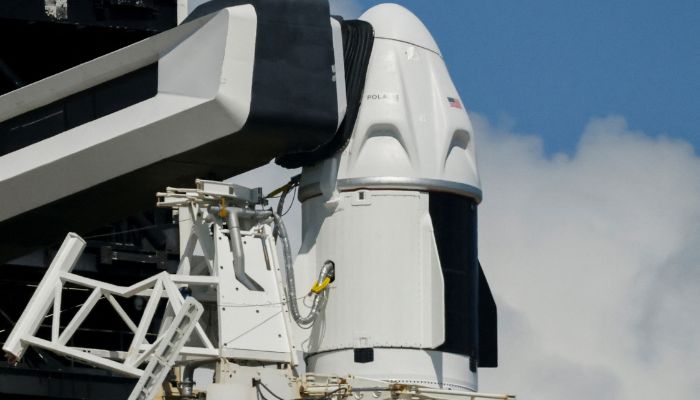SpaceX postpones historic mission featuring first private spacewalk
Dragon capsule of Polaris Dawn mission is expected to reach altitude of 1,400-kms
August 28, 2024

SpaceX on Tuesday postponed once more its attempt at launching a daring orbital expedition featuring an all-civilian crew that is aiming to carry out the first-ever spacewalk by private citizens.
The Polaris Dawn mission, organised by billionaire entrepreneur Jared Isaacman, had been set to lift off from Nasa's Kennedy Space Centre in Florida during a four-hour window early Wednesday.
But SpaceX announced Tuesday it was pushing back the launch plans "due to unfavourable weather forecasted in Dragon's splashdown areas off the coast of Florida," in a message on X.
An earlier attempt on Tuesday was scrapped due to a helium leak on a line connecting the tower to the rocket.
Riding atop a Falcon 9 rocket, the SpaceX Dragon capsule is set to reach a peak altitude of 870-miles (1,400kms) — higher than any crewed mission in over half a century, since the Apollo era.
Mission commander Isaacman will guide his four-member team through the mission's centrepiece: the first-ever spacewalk by non-professional astronauts, equipped with sleek, newly developed SpaceX extravehicular activity (EVA) suits.
Rounding out the team are mission pilot Scott Poteet, a retired United
States Air Force lieutenant colonel; mission specialist Sarah Gillis, a lead space operations engineer at SpaceX; and mission specialist and medical officer Anna Menon, a lead space operations engineer at SpaceX.
Polaris Dawn is set to be the first of three missions under the Polaris program, a collaboration between Isaacman, the founder of tech company Shift4 Payments, and SpaceX.
Polaris Dawn will reach its highest altitude on its first day, venturing briefly into the Van Allen radiation belt, a region teeming with high-energy charged particles that can pose health risks to humans over extended periods.
On day three, the crew will don their state-of-the-art EVA spacesuits — outfitted with heads-up displays, helmet cameras, and advanced joint mobility systems — and take turns to venture outside their spacecraft in twos.
Each will spend 15 to 20 minutes in space, 435-miles above Earth's surface.
Also on their to-do list are testing laser-based satellite communication between the spacecraft and Starlink, SpaceX's more than 6,000-strong constellation of internet satellites, in a bid to boost space communication speeds, and conducting nearly 40 scientific experiments.
These include tests with contact lenses embedded with microelectronics to continuously monitor changes in eye pressure and shape.
After six days in space, the mission will conclude with a splashdown off the coast of Florida.











